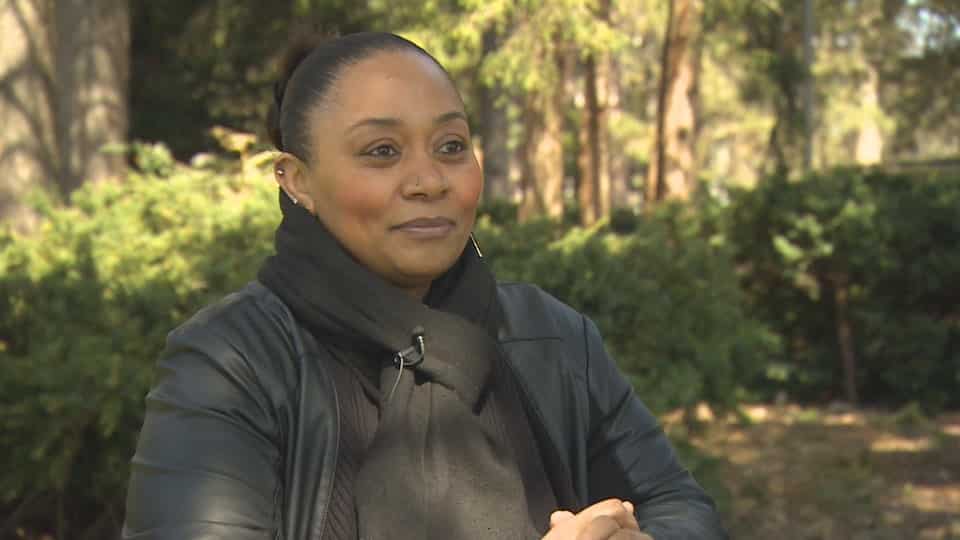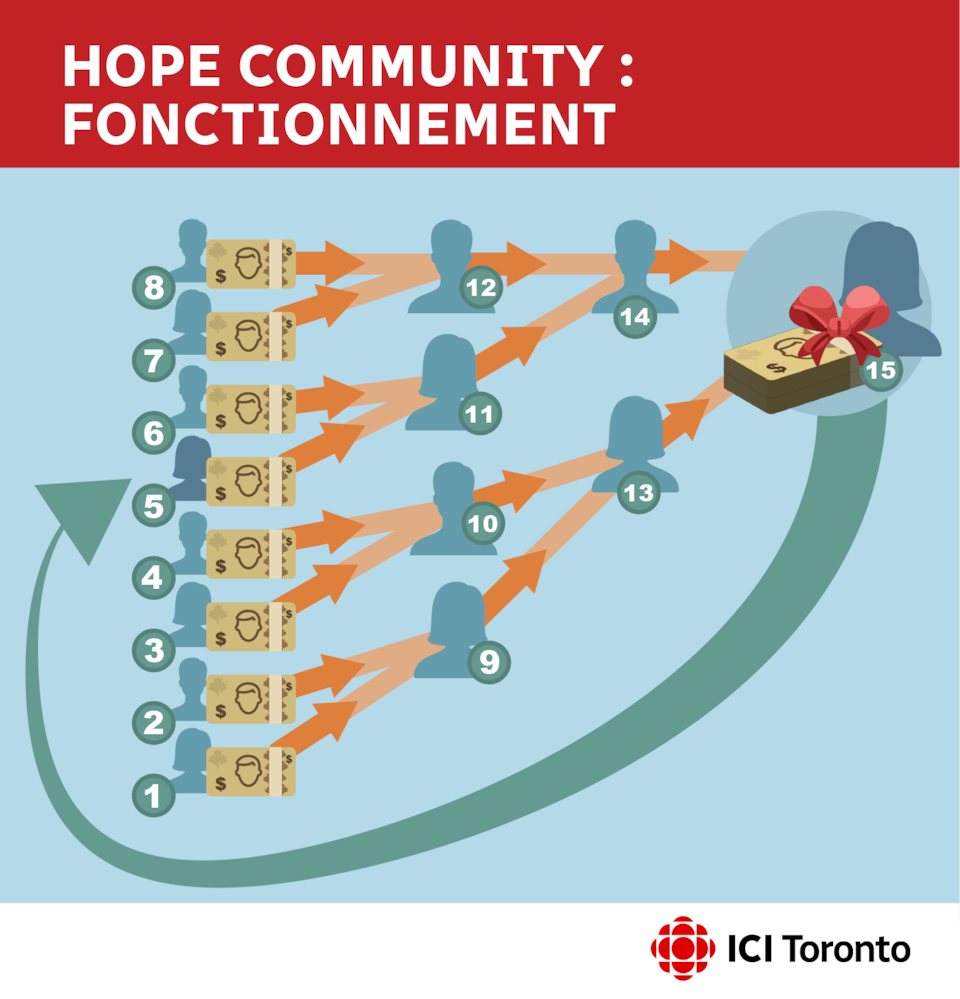Amina Patel set up Hope Community in 2020. Her goal was to enable members of her community to help each other financially, she says. Faced with the failure of the strategy, frustrated participants accuse him of having taken their money.
The scheme is based on the principle of the tontine. This is an old savings system, mostly used in communities in some African countries, which requires members of the community to contribute over the long term and then reap, in turn, the fruit of these savings.
Amina Patel had managed to reap some savings by participating in a similar scheme online and wanted to create a new one.
” I’m a good salesperson (…) I had recruited a lot of people so I thought why not create my own community. »
The community
it puts in place works according to a pyramid scheme. The first savers must recruit two other investors, who must do the same. When the group reaches 16 people at the same level, initial savers reach what they call a celebration
and reap what they call a present
.
Thus, an initial deposit of $500 should lead to a harvest of $4000.
Thereafter, they must in principle start again at the bottom of the pyramid to allow other savers to to celebrate
in their turn.
Amina Patel says that the community quickly became very successful and that hundreds of people, first in Hamilton, then elsewhere in Canada, then around the world were recruited.
The Hamilton resident explains that several people have reaped gains, but some of them immediately left the community without handing over new investments. She claims that some savers also gave false names rather than recruiting real savers.
Eventually, the scheme stopped working and many savers who have already paid their share worry about never harvesting.
Disappointments and threats
Josy Ayel, who lives in Montreal, claims to have lost $4,000 in this tontine. It is an amount that he invested after having popular
a first time.
Disappointed, he sees his losses as an investment gone wrong: I take it like I’m starting a business and [que] I am not getting the income I had hoped for.
If the Montrealer approaches his losses with philosophy, other savers are rather angry.
Bondee Joshua, who lives in Toronto, says he lost thousands of dollars, but also says he was pressured by people he had recruited to participate in the scheme. I dropped
he said, I haven’t been able to reach her for months
.
He admits to having traveled to Hamilton to try to confront the organizer. Amina Patel claims she perceived his visit as a threat and contacted the police.
Bondee Joshua also says he is considering the possibility of contacting the authorities to file a fraud complaint: It is certain that she took the money, where is the money?
But Amina Patel denies having taken the savings from other savers: Never, not a penny
says the lady who claims to have lost savings herself.
She admits to making what she considers mistakes that led to the difficulties of her scheme.
For example, it claims to have allowed participants to borrow the share of people they should have recruited, unable to find interested parties.
The tontine
According to financial advisor Rajiv Bissessar, financial pyramid schemes are mostly doomed to fail.
He maintains, however, that circular tontines, that is to say, which provide for the same group of savers to maintain their relationship until all have obtained their share, can work.
” This is a strategy that is used a lot, especially among newcomers »
In the same breath, he points out that these savings systems involve risks of which participants must be aware: If people leave, the people who stay won’t get their money.
Mr Bissessar also underlines that these communities are not legal persons. If a participant dies, for example, there is no guarantee that his family will be able to recover his share. Finally, the financial advisor points out that savers who use these strategies deprive themselves of possible tax savings offered by the savings vehicles of financial institutions.
According to him, however, it is precisely the lack of confidence of some savers in financial institutions that pushes them to invest in private schemes.
Reference-ici.radio-canada.ca


